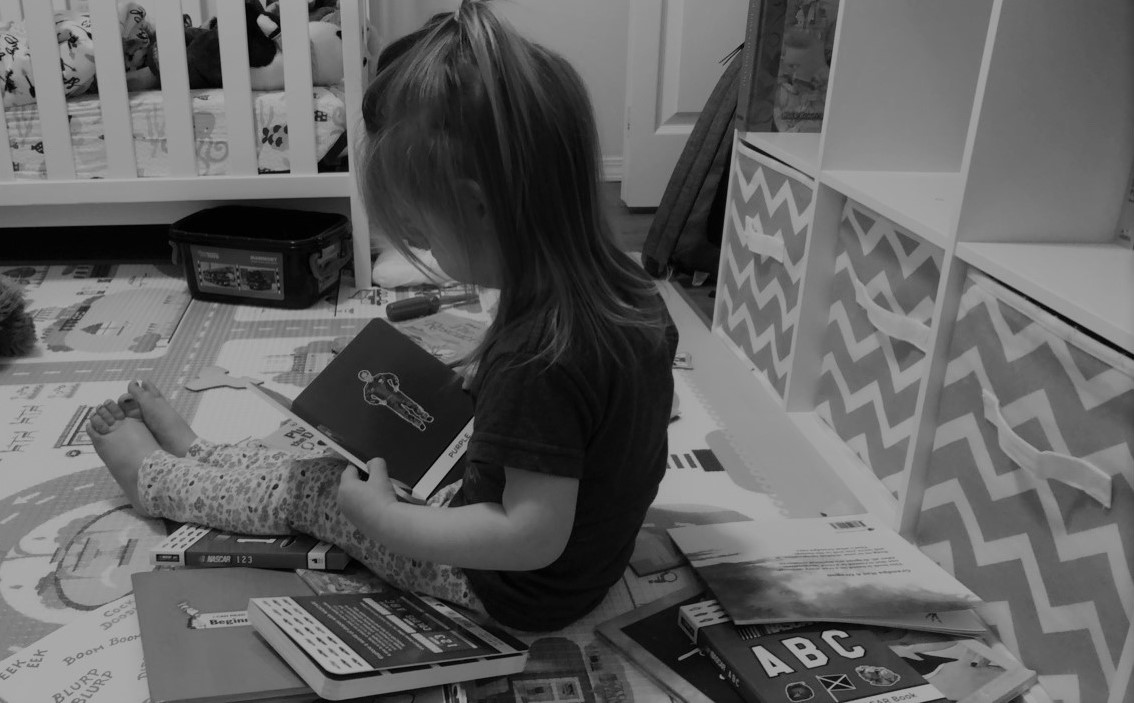
Introducing Quiet Time
It’s a sad day when your toddler no longer requires that midday nap. This recently happened at my house with my two-and-a-half-year-old. I’ll share more in a future blog post about how I knew it was time to drop the nap. Two and a half is very young to drop the nap so I’m still hoping it comes back. In the meantime, I decided to introduce quiet time.
Although your toddler will, at some point no longer require naps, they can still benefit from having “quiet time” in the afternoon. Quiet time allows for you and your toddler to have a break from the busyness of the day. It helps to restore energy so they can get through the rest of the day until bedtime.
Let’s dive in to the ins and outs of how to introduce quiet time for your littles!
Who Needs Quiet Time?
A child who no longer requires an afternoon nap. If your toddler is consistently (two weeks or more) spending their naptime just playing in their bed and not falling asleep, it may be time to drop the nap. If your toddler naps in the afternoon but then takes a long time to fall asleep at bedtime, it may be time to drop the nap. The transition from nap to quiet time will typically happen between 2.5 to 4 years of age.
A parent whose toddler is no longer napping certainly needs quiet time in the afternoon!
What is It?
Quiet time is an alternative to nap time for toddler and children who no longer require that afternoon nap. Quite time should be well…quiet. So, keep the play options limited to calm activities such as puzzles, books, colouring, etc. Quiet Time is intended to be independent play time. When they were previously napping, they were doing that independently so naturally this alternative should also be an independent activity.
Read the “how to” for a strategy if your child struggles with independent play.
Where Should It Take Place?
Your child’s bedroom is the best place for quiet time to take place. Their bedroom is already associated with quiet, calm activities so it’s ideal to introduce quiet time there as well. Although quiet time allows your child to play I would be caution around allowing your child to have quiet time in the playroom. Some children will be able to easily entertain themselves with the quiet activities you have set out for them, while other kids may be too tempted to play with all the loud, rambunctious toys that are in that room.
If your child does not have their own room, or you have multiple children that require some quiet time, you will want to separate them for this activity. Quiet time is designed to be independent play to allow your child an opportunity to rest their bodies, with limited stimulation. Siblings can cause too much stimulation which takes away from all the benefits that quiet time can offer to your child.
Wherever you decide, ensure that quiet time is taking place in the same place every day. It should be in dimly lit area, with very limited distraction from noises, lights, and screens.
When Should It Take Place?
After lunch, every day (or most days). Consistency like all things in parenthood, goes a long way.
Why Should I Introduce Quiet Time as an Alternative to Nap Time?
- Helps to adjust the body clock: It’s a big adjustment on tiny bodies when they are no longer taking that afternoon nap. Quiet time is an opportunity for your child’s body to rest and recharge without falling asleep.
- Helps to maintain energy throughout the day to minimize evening tantrums: Without quiet time, that opportunity to rest, you may notice more tantrums in the late afternoon/evening. Tantrums consistently at that time of day are a sign that your child is over stimulated and overtired. Quiet time can help minimize or avoid these end of day tantrums.
- It continues to give everyone a little break mid-day: I don’t know about you, but I LOVE that break in the middle of the day. Quiet time is useful for parents too! Having that short break in the afternoon gives you some time to yourself to recharge so you also have the energy to take on the rest of the day.
- It promotes independent play: Independent play is so important for children’s development. It gives them the opportunity to be creative and build confidence.
How to Introduce Quiet Time?
You’ll have to explain the expectations of quiet time to your child. Let them know that they are expected to stay in their room, quietly playing until you come to get them. Lay out some quiet toys/activities to occupy them during their quiet time then leave the room.
Hold on! I know what you are thinking… “Yeah right Melissa! There is NO WAY my child will just let me leave the room and play quietly on their own”. I have a toddler too. I know that it won’t be that easy!
So, this is the goal for how quiet time will go…but it will take some time to get to that point. Use a timer! Set a timer for 10 minutes (or less) on the first day, then increase it by 5 minutes every few days until the times is set to 30-45 minutes. During the time that the timer is running, it’s important not to give in to any tantrums surrounding the expectations of quiet time. If you give in and allow your child out of the room, or to use screens, or play with rambunctious toys, you are preventing any progress from happening. Hold strong to your boundaries, just like anything in parenthood, and your child will learn that you mean what you say.
More on the Where, When, Why and How
Consistency is an important aspect of quiet time. Same place, same time, most days of the week. If you consistently offer quiet time, it will become a part of your child’s daily routine. Toddlers love structure and predictability. Quiet time satisfy those needs. If you are looking for other ways to add structure and predictability into your child’s day, download my free bedtime routine chart.
Toddlers are well-known to be curious so the idea of leaving them alone for 30 minutes to be quiet may sound a little scary! Like I said…I have a toddler too. I know that quiet and toddlers are not usually a great combination. Use a video monitor or check in on them periodically to ensure they are being safe and not destroying anything.
So, there you have it! All the ins and outs of why quiet time is important and how you can introduce it to your non-napping littles.



